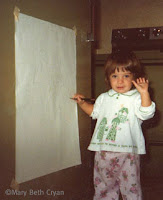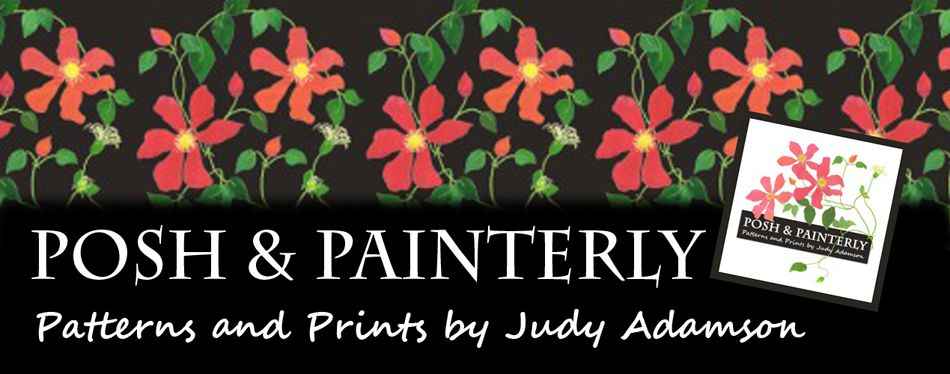This month's e-interview is with
illustrator and paper engineer,
Mary Beth Cryan from Rhode Island.
Mary Beth's Blog
Mary Beth's Portfolio Website
Mary Beth, when did you first realise that you were an artist?

I was born an artist. I can't remember a time when I didn't consider myself an artist. My mother was an elementary art teacher turned stay-at-home mom. She started teaching me art as soon as I popped out of the womb. And I loved it. There was never a year when "more art supplies" was not on my Christmas wish list.
Although, my love of art may have started before that. On my last business trip to New York City, I struck up a conversation with a woman in a boutique who claimed to be a spiritual healer. She sensed I had "been creating art for many lifetimes." When she told me that my first thought was, "I am putting that on my resume immediately!"
Have you had formal art/design/illustration training?
Yes, I have a Bachelor of Fine Arts from Syracuse University with a major in Illustration.
What was the most important thing you learnt from it?
The most important thing I learned was in a Communications design class. The philosophy of that department was that a good idea must be at the core of every design. At the time I didn't realize the importance of the lesson. But over the years, real work experience has proven the point true.
What do you consider the most important thing you have learnt on your journey as an artist and from whom did you learnt it?
The most important thing I've learned is an artist must think of themselves as a business person. My father taught me this. He is a professional children's photographer. He has taught me almost everything I know about running a small business. I owe my success to him.
Which artists/designers/illustrators inspire you?
I am influenced by every piece of art I ever see in every discipline. I follow about 200 different art blogs. I have a constant thirst to see new art that can't be satiated. It's annoying actually. Right now I'm most inspired by fashion designers.
Some of my favorites are Dries Van Noten, Manish Arora, Prabal Gurung, Marc Jacobs, Mary Katrantzou, Miuccia Prada, Prabal Gurung, Lazaro Hernandez and Jack McCollough (Proenza Schouler), Thakoon Panichgul, Tsumari Chisato, Viktor Horsting and Rolf Snoeren and the list goes on and on.
I love fashion because of its fast pace and ability to be worn. I consider it the front trenches of the art world.
What is your favourite medium?
Adobe Illustrator is my favorite medium. I know that's weird but I love it. I think it's cool that it's a new medium that only artists from the present time have had the opportunity to use. Let's face it, I can't compete with Degas at painting but I can kick his butt at vector art!
How long has your business been up and running?
I quit my full time toy design job almost eight years ago to start my own business.
Are there any particular pitfalls that have caused difficulties for your business that you would like to warn others about?
I would just warn people that they should expect to work really, really hard. There is nothing easy about running your own business. I work harder now than I've ever worked before and I'm the worst boss I've ever had. But it's the most rewarding job I've ever had. I could never go back to working for someone else's dream. Life is too short.
Do you enjoy the business side of things?
No. But I'd rather do it myself than hire an agent.
Have you had any training in the art business?
I'm a business school dropout. A few years after I graduated from Syracuse University I went back to school as an MBA student at Bryant University (then Bryant College) at night while I worked full
time at my toy design job. I knew I wanted to start my own business and needed to learn about business. The program was geared toward corporate business. So it wasn't as relevant as I had hoped. I left the program after a few semesters.
But I learned a ton about the "business mindset." Ironically, I had to take a class in geometry that eventually ended up being invaluable when I started doing paper engineering. I've also taken all of J'net Smith's art licensing classes.
In addition, my husband is gifted sales person. He is forever teaching me sales techniques.
Mary Beth, I see that you specialise in 'paper engineering, surface pattern design, and product concepts'. How did that come about?
The common thread between them is they are all 3 dimensional product based. I LOOOOOOOOOOOVE consumer product. I want to make lots of it. I find nothing more satisfying than seeing my illustrations on a 3 dimensional product (books included).
Do you find that the business side of things takes up more time than you would like?
I don't feel that the business side takes up that much of my time. I do a lot of books which are long projects. The longer the project, the less projects fit in a year, the less needs to be recorded, the less business there is.
That sounds good! Are you working alone or do you have help?
I work by myself in my home studio. I have a few freelancers that help me from time to time.
I really enjoy working alone. I need complete silence to work. I don't know how I ever worked in a design studio with many designers chatting and playing music. I could never go back to that. I really like people and was afraid I would be lonely when I went freelance. But I'm not lonely at all.
Do you paint/draw regularly?
I get to draw everyday for work.
It has taken me a while to arrive at where I'm happiest, designing repeating patterns, via screenprinting, painting in soft pastels, then Greeting Card design . Are you still doing what you originally set out to do?
Yes. I consider when "I set out" the time when I left home to go to college to become a professional artist and that is what I'm currently doing. I "set out" again when I left my job to start my own illustration business and I'm still doing that too.
Do you have some idea of how many hours per week you work?
It depends how busy I am. I try to only work 40 hours a week because I work very intensely and have to be careful not to burn myself out. But I probably work closer to 50. When I'm really busy, closer to 60. If you count all the time I'm researching on the internet, shopping the market, talking about business, and thinking about work, I work 24 hours a day, 7 days a week
I know the feeling! Do you have regular contact with other artists?
Yes. Almost everyone I know is an artist including my dad, mother, and one of my two brothers. In Rhode Island you can't throw a stone without hitting an artist. I need to work on finding some friends that aren't artists.
Thank goodness my husband is not one. Otherwise I would talk of nothing but art all the time.
What do you consider your biggest achievement – or the one that pleases you most – so far?
I'm most proud of the work I've done for the MoMA (the Museum of Modern Art in New York City) and the books I've done. I'm one of the regular contributing artists for the MoMA's line of holiday greeting cards. If I have a bad day, that fact makes me feel better. I currently have 7 paper crafting books out on the market. I am very proud of them. I have 5 more coming out this year. I love books and consider it an honor to be able to create them.
Wow - that is quite an achievement! But is there anything you would like to change about your art business?
I would like to have more time to spend with my family which is going to involve working less. This is hard for me.
Do you have a favourite quote, art-related or otherwise?
I have a bunch of art related quotes on the left hand column of
my blog . Right now my favorite is "She wasn't where she had been. She wasn't where she was going…but she was on her way. " - Jodi Hills It's not specifically about art but it's how I've been feeling about my art career lately .
And finally, what are your plans for the future, Mary Beth?
I plan to create many more books and to get deeper into art licensing. I'm currently working on a body of
work with a style appropriate for women. I have plans to unleash it on the art licensing world soon.
I am sure all our readers will join me in wishing you every success with that. It sounds intriguing and I hope you'll come back and share it with us once it's 'unleashed'!
Thank you so much, Mary Beth, for finding the time to give us the opportunity to get to know you and your work better. I'm sure your insights and your success will encourage and inspire anyone who reads this!
.



































